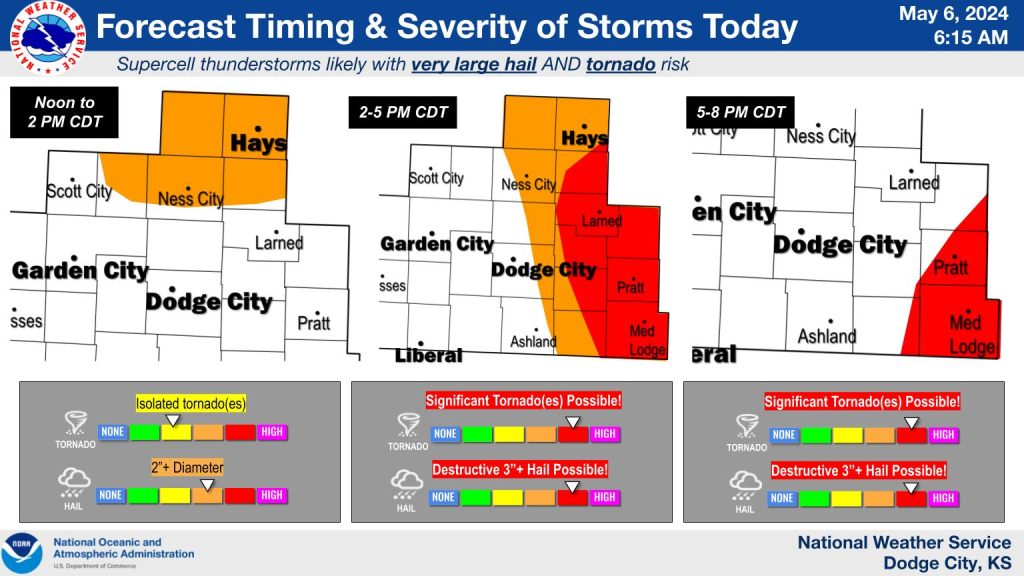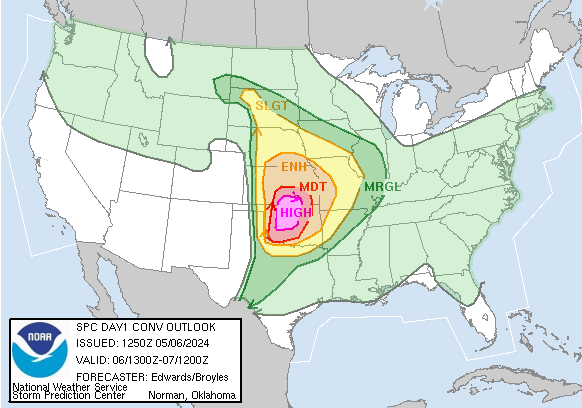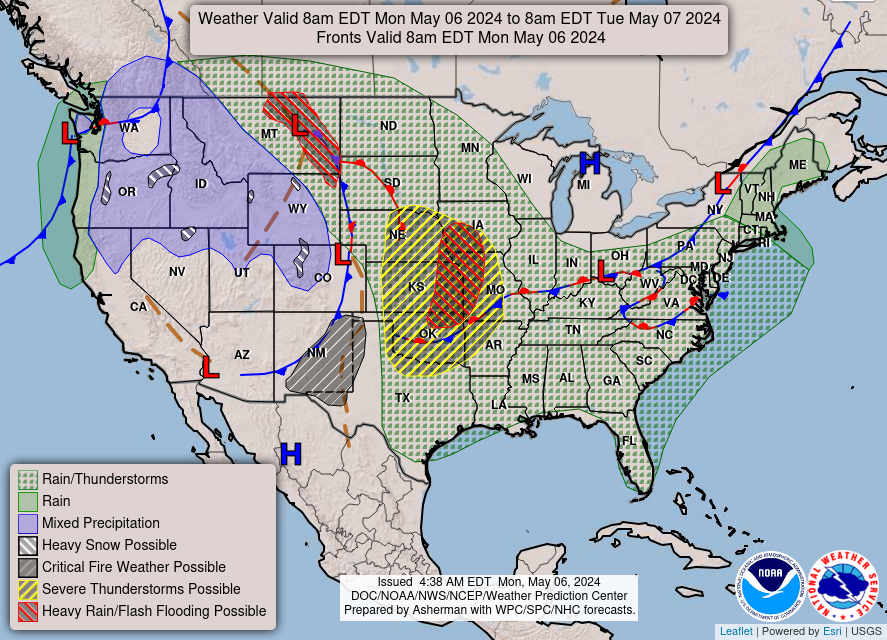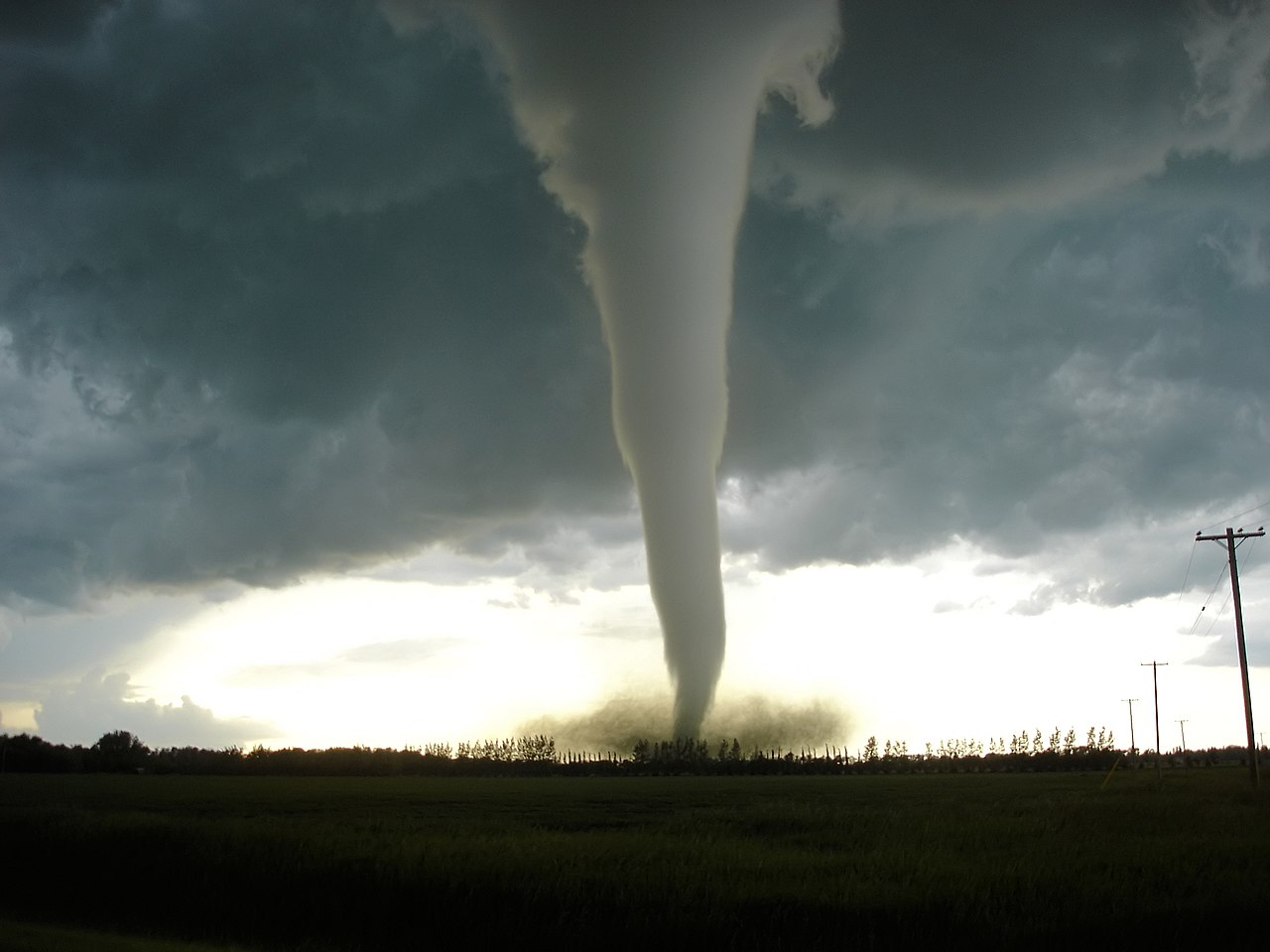A significant severe weather outbreak looms over Kansas and Oklahoma today, promising long-track tornadoes among other threats. The forecast indicates the onset of severe weather by midday or early afternoon, particularly in west central Kansas.

However, the greatest concern resides farther east in central and south central Kansas, where numerous long-track supercell storms are anticipated. These storms could produce very large hail, measuring 3 inches or greater in diameter, and potentially unleash destructive, long-track tornadoes.

Today’s forecast predicts southwest to west winds, ushering in drier air from the west. Consequently, fire weather concerns will heighten across the central and western Panhandles. It’s imperative to implement wildfire prevention measures to mitigate the risk of ignitions later today.

A Red Flag Warning is in effect for Southeast New Mexico down to the Davis Mountains and Foothills for this afternoon and evening. Relative humidity is expected to plummet to as low as 6 percent, with wind gusts reaching up to 50 miles per hour, particularly pronounced in mountainous regions. Motorists are advised against driving or pulling over onto dry grass, and the disposal of lit cigarettes outdoors is strongly discouraged. Additionally, strict adherence to burn bans is crucial, along with refraining from any form of burning activity. Prompt reporting of smoke or fire sightings is essential for swift intervention.

A regional outbreak of severe weather is anticipated over parts of the south-central Plains from this afternoon through evening, featuring multiple strong, long-tracked tornadoes, as well as very large hail and severe thunderstorm gusts.

An extended pattern of potential large fire growth is projected to commence Sunday and persist through midweek. Strong winds, coupled with exceptionally low relative humidity, will engender critical to extreme fire weather conditions across much of northern and central New Mexico. Given the conducive environment, rapid fire spread is highly probable in susceptible fuel sources. It’s incumbent upon all to play a role in wildfire prevention efforts.





